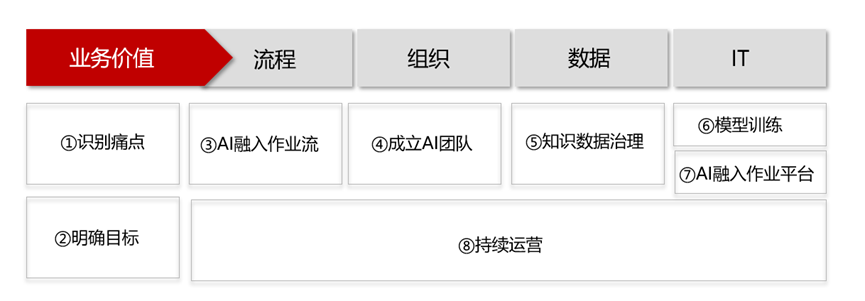前言

题解
典题场, EF都有很多种解法
A. 小红的同余
性质: 相邻两数互质
x = ( m + 1 ) / 2 x = (m+1)/2 x=(m+1)/2
m = int(input())
print ((m + 1) // 2)
B. 小红的三倍数
性质: 各个位数之和是3的倍数,可被3整除
和数的组合顺序无关
n = int(input())
arr = list(map(int, input().split()))
res = 0
for v in arr:
while v > 0:
res += v % 10
v //= 10
if res %3 == 0:
print ("YES")
else:
print ("NO")
C. 小红充电
思路: 分类讨论题
要注意的是,可以通过耗电回撤到超级快充的状态
x, y, t, a, b, c = list(map(int, input().split()))
if x <= t:
r = min((100 - x) / c, (100 - x) / a, (100 - x) / b)
print ("%.8f" % (r))
else:
r = min((100 - x) / a, (100 - x) / b, (x - t) / y + (100 - t) / c)
print ("%.8f" % (r))
D. 小红的 gcd
因为a是一个大数
所以从gcd的推演公式切入
g c d ( a , b ) = g c d ( b , a gcd(a, b) = gcd(b, a % b) gcd(a,b)=gcd(b,a
可以迭代线性遍历a,来求解a%b的值
然后在求gcd(a%b, b)
a = input()
b = int(input())
r = 0
for c in a:
p = ord(c) - ord('0')
r = (r * 10 + p) % b
from math import gcd
print (gcd(r, b))
E. 小红走矩阵
方法1: 并查集
方法2: 二分+bfs
方法3: dijkstra
这边给了并查集的思路,即按权值从小到大合并,直至(0,0)和(n-1,m-1)连通.
class Dsu(object):
def __init__(self, n) -> None:
self.n = n
self.arr = [-1] * n
def find(self, u):
if self.arr[u] == -1:
return u
self.arr[u] = self.find(self.arr[u])
return self.arr[u]
def merge(self, u, v):
a, b = self.find(u), self.find(v)
if a != b:
self.arr[a] = b
n = int(input())
vis = [[False] * n for _ in range(n)]
ops = []
grid = []
for i in range(n):
row = list(map(int, input().split()))
grid.append(row)
for j in range(n):
ops.append((row[j], i, j))
ops.sort(key=lambda x: x[0])
ans = 0
dsu = Dsu(n * n)
for (v, y, x) in ops:
vis[y][x] = True
for (dy, dx) in [(1, 0), (-1, 0), (0, 1), (0, -1)]:
ty, tx = y + dy, x + dx
if 0 <= ty < n and 0 <= tx < n:
if vis[ty][tx]:
dsu.merge(y * n + x, ty * n + tx)
if dsu.find(0) == dsu.find(n * n - 1):
ans = v
break
print (ans)
F. 小红的数组
思路: ST表
这题思路应该蛮多的
有在线解法,离线解法
最直观的
区间子数组的绝对值最大和,是区间前缀和的最大值 − 区间前缀和的最小值 区间子数组的绝对值最大和,是区间前缀和的最大值 - 区间前缀和的最小值 区间子数组的绝对值最大和,是区间前缀和的最大值−区间前缀和的最小值
- 前缀和
- RMQ(区间最大/最小)
莫队板子也可以的
import java.io.*;
import java.util.StringTokenizer;
import java.util.function.BiFunction;
public class Main {
public static void main(String[] args) {
AReader sc = new AReader();
PrintWriter pw = new PrintWriter(new BufferedOutputStream(System.out));
int n = sc.nextInt();
int[] arr = new int[n];
for (int i = 0; i < n; i++) arr[i] = sc.nextInt();
long[] pre = new long[n + 1];
for (int i = 0; i < n; i++) pre[i + 1] = pre[i]+arr[i];
SparesTable maxSt = new SparesTable(pre, Math::max);
SparesTable minSt = new SparesTable(pre, Math::min);
int q = sc.nextInt();
for (int i = 0; i < q; i++) {
int l = sc.nextInt() - 1, r = sc.nextInt();
long res = maxSt.query(l, r) - minSt.query(l, r);
pw.println(res);
}
pw.flush();
}
static
class SparesTable {
long[][] tables;
BiFunction<Long, Long, Long> callback;
public SparesTable(long[] arr, BiFunction<Long, Long, Long> callback) {
int n = arr.length;
int m = (int)(Math.log(n) / Math.log(2) + 1);
tables = new long[m][n];
this.callback = callback;
for (int i = 0; i < n; i++) {
tables[0][i] = arr[i];
}
for (int i = 1; i < m; i++) {
int half = 1 << (i - 1);
for (int j = 0; j + half < n; j++) {
tables[i][j] = callback.apply(tables[i - 1][j], tables[i - 1][j + half]);
}
}
}
// 闭闭区间
long query(int l, int r) {
int t = (int)(Math.log(r - l + 1) / Math.log(2));
return callback.apply(tables[t][l], tables[t][r - (1 << t) + 1]);
}
}
static
class AReader {
private BufferedReader reader = new BufferedReader(new InputStreamReader(System.in));
private StringTokenizer tokenizer = new StringTokenizer("");
public String nextLine() {
tokenizer = new StringTokenizer("");
return innerNextLine();
}
public String next() {
hasNext();
return tokenizer.nextToken();
}
public int nextInt() {
return Integer.parseInt(next());
}
public long nextLong() {
return Long.parseLong(next());
}
private String innerNextLine() {
try {
return reader.readLine();
} catch (IOException ex) {
return null;
}
}
public boolean hasNext() {
while (!tokenizer.hasMoreTokens()) {
String nextLine = innerNextLine();
if (nextLine == null) {
return false;
}
tokenizer = new StringTokenizer(nextLine);
}
return true;
}
}
}
写在最后




















